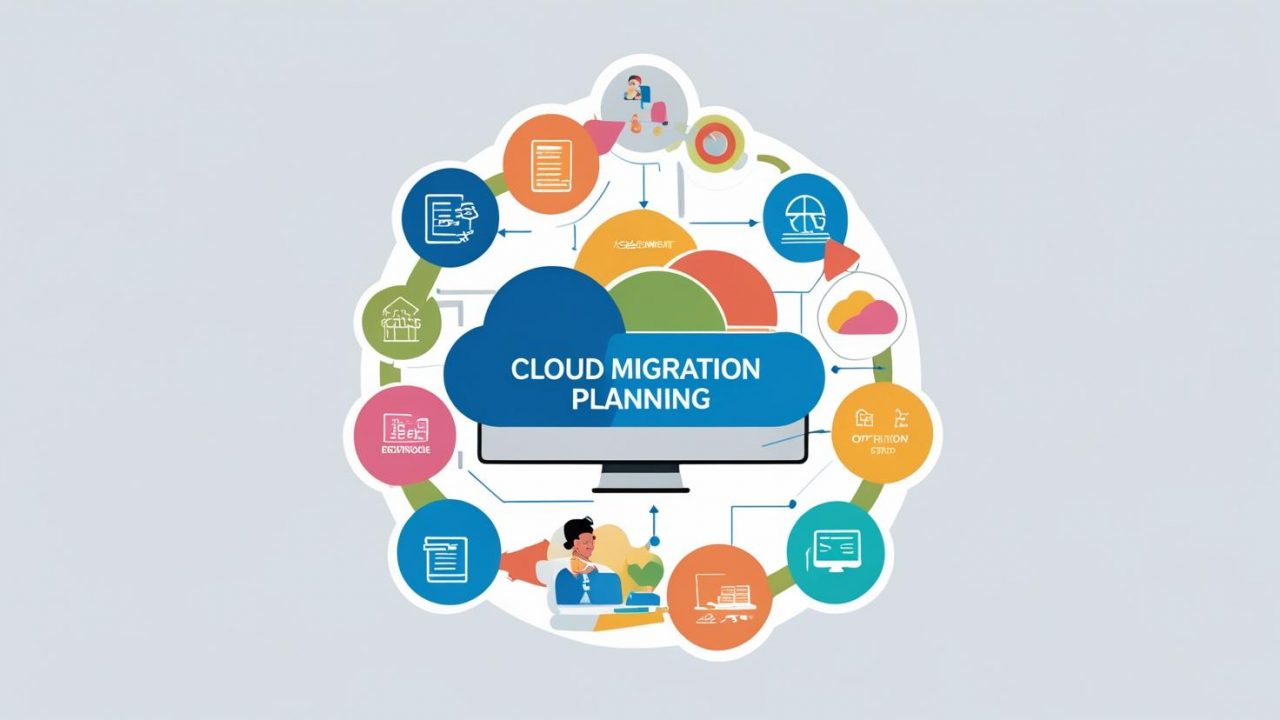How Do I Plan My Cloud Migration?
At OpsNexa, we understand that transitioning to the cloud can be complex—but with a structured plan, it becomes a powerful business transformation. If you’re wondering, “How do I plan my cloud migration?”, this detailed guide will help you align your business goals with cloud capabilities while avoiding common pitfalls.
What Is Cloud Migration?
Cloud migration is the process of moving digital assets—including data, applications, and workloads—from on-premise infrastructure to the cloud. This can involve:
-
Public Clouds like AWS, Azure, and GCP
-
Private Cloud environments
-
Hybrid Cloud models
At OpsNexa, we specialize in crafting tailored migration strategies such as:
-
Lift and Shift (Rehosting)
-
Replatforming and Refactoring
-
Modernizing legacy systems
-
SaaS adoption and containerization
Why Planning Matters in Cloud Migration
Without a comprehensive migration plan, businesses risk high costs, system downtime, and compliance failures. Here’s why OpsNexa insists on strategic planning:
-
🔒 Security & Governance: Stay compliant with regulatory standards like GDPR, HIPAA, and SOC 2.
-
📊 Optimized Costs: Prevent overprovisioning and cloud bill surprises.
-
🚀 Performance Gains: Ensure apps run faster and scale better.
-
🧩 Seamless Integration: Avoid disruptions by mapping dependencies accurately.
Steps to Plan Your Cloud Migration with OpsNexa
Cloud migration isn’t a one-size-fits-all journey. At OpsNexa, we guide you through each phase for a smooth transition.
Step 1: Define Business Objectives
Why move to the cloud? Whether your goal is cost reduction, improved performance, faster innovation, or better disaster recovery, having clearly defined KPIs helps drive the right strategy.
OpsNexa aligns cloud technology with your business vision, ensuring every dollar spent delivers measurable value.
Step 2: Perform an Infrastructure Assessment
Our engineers perform a deep-dive audit to analyze:
-
Server workloads
-
Application dependencies
-
Licensing considerations
-
Network architecture
-
Security vulnerabilities
This assessment helps identify what can be migrated, modernized, or retired, creating a solid foundation for your cloud roadmap.
Step 3: Choose the Right Cloud Model and Provider
OpsNexa helps you evaluate between:
-
Public cloud (like AWS, Azure, GCP)
-
Private or on-premise cloud
-
Hybrid solutions
We consider factors such as:
-
Scalability
-
Compliance requirements
-
Vendor lock-in risks
-
Geographic distribution and latency
Step 4: Select a Cloud Migration Strategy
Not all applications are built the same. That’s why OpsNexa uses the “6 Rs” framework:
| Strategy | Ideal For |
|---|---|
| Rehost | Quick migrations with minimal changes |
| Refactor | Apps needing modernization |
| Replatform | Enhancing scalability with slight code changes |
| Repurchase | Switching to SaaS tools |
| Retain | Keeping some workloads on-premises |
| Retire | Phasing out unused assets |
This hybrid approach ensures every workload is optimized for the cloud.
Step 5: Create a Cloud Migration Roadmap
We convert strategy into execution through a customized roadmap:
-
📆 Timeline: Define milestones for each migration phase
-
👥 Roles: Assign responsibilities (cloud architects, DevOps, security)
-
📉 Risk Analysis: Identify possible disruptions and plan mitigations
-
🔁 Rollback Procedures: Have contingency plans in place
-
📦 Data Backup: Secure your data before any transition
Step 6: Address Security, Compliance & Monitoring
At OpsNexa, cloud security is non-negotiable. We help implement:
-
🔐 Identity and Access Management (IAM)
-
🧾 Compliance frameworks (ISO, GDPR, PCI-DSS)
-
🔍 Continuous monitoring and threat detection
-
🔄 Backup and disaster recovery plans
By embedding security into every layer of the migration, we future-proof your cloud environment.
Common Pitfalls to Avoid in Cloud Migration
Even experienced IT teams can make mistakes. Avoid these with OpsNexa:
-
Underestimating Complexity
-
Migrating everything at once
-
Lack of training and change management
-
Improper budget allocation
-
Neglecting cloud governance policies
Why OpsNexa Recommends a Phased Migration
OpsNexa follows an iterative approach to reduce risk:
-
Phase 1: Migrate non-critical apps
-
Phase 2: Migrate business-critical systems
-
Phase 3: Optimize and modernize post-migration
Each phase is backed by real-time monitoring, rollback readiness, and performance testing.
Final Checklist for a Successful Cloud Migration
Before going live, ensure:
✅ Business goals are defined
✅ Cloud provider and architecture are chosen
✅ Apps and data are inventoried
✅ Strategy (6 Rs) is mapped per workload
✅ Security, IAM, and compliance are in place
✅ A rollback plan exists
✅ Staff are trained on the new environment
With OpsNexa, this checklist is built into every engagement.
Keep Growing After Migration
Your cloud journey doesn’t stop post-migration. At OpsNexa, we help with:
-
🎯 Cost optimization
-
🔄 Auto-scaling configurations
-
🛠 Cloud-native modernization (Kubernetes, serverless)
-
📈 Monitoring and DevOps automation
-
🧠 Ongoing training and support
We ensure that your cloud setup evolves with your business.
Conclusion
Cloud migration is a strategic decision that can redefine your business’s agility and resilience. By planning ahead with the OpsNexa methodology, you gain more than just cloud access—you unlock value, efficiency, and competitive advantage.
So, the next time you ask, “How do I plan my cloud migration?”, remember that the right strategy, backed by a trusted partner like OpsNexa, makes all the difference.
Contact OpsNexa for Devops architect and devops hiring solutions.



